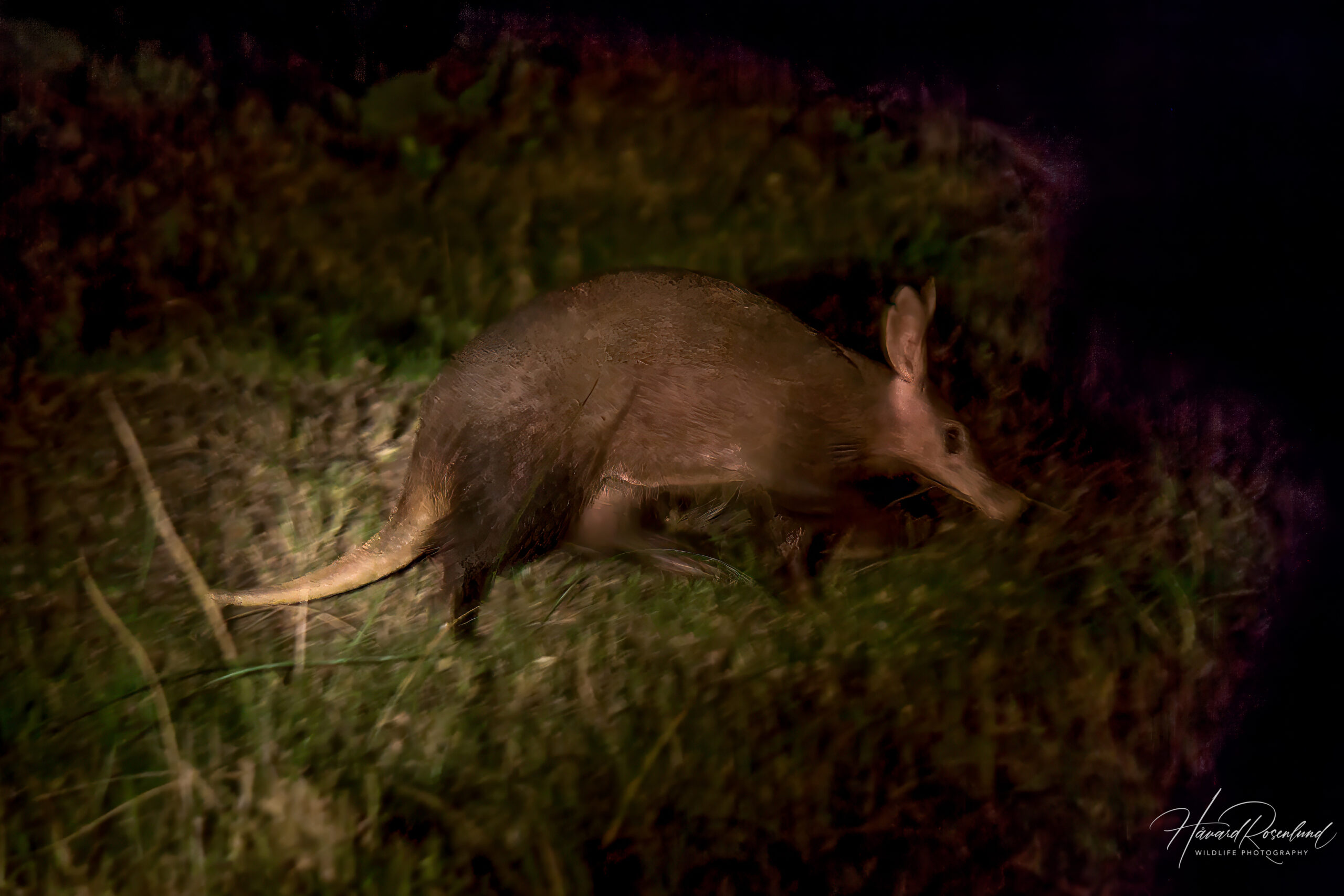Description
The aardvark (Orycteropus afer) is a unique, solitary, and secretive nocturnal mammal native to sub-Saharan Africa, which is renowned for its distinctive appearance. It has a long snout, robust claws for digging, and a body length ranging from 105 to 130 cm (3.4-4.3 in), excluding its tail which adds an additional 60 to 70 cm (2-2.3 ft.). Its weight varies between 60 and 80 kg (132-176 lb). Aardvarks possess a thick-skinned, sparsely haired body, with a pig-like snout used for sniffing out ants and termites. It has no close living relative. The closest living relatives include elephants, manatees, and dugongs, which are part of the same superorder, Afrotheria.
Habitat
Aardvarks inhabit a range of environments from savannas and grasslands to woodlands. They are dependent on areas with suitable soils that facilitate the construction of burrows. They are proficient diggers, which allows them to create extensive burrow systems. These burrows are essential for their thermoregulation, shelter, and protection against predators. Aardvark burrows no longer in use are often taken over by other species of animals, such as warthogs, hyenas, and, porcupines. Their habitat choice is also influenced by the availability of their primary food source, ants and termites.
Behavior and feeding habits
Primarily insectivorous, aardvarks specialize in consuming ants and termites. They use their keen sense of smell to locate these insects and dig them out with their powerful claws. An aardvark’s long, sticky tongue can reach up to 30 cm to gather insects, consuming up to 50,000 in one night. The largest prey they tackle are termite mounds, which they break open with their strong limbs and claws. Their nocturnal and solitary nature helps them avoid predation and competition for food. Their large ears provide excellent hearing, and makes them efficient at avoiding perceived threats. This makes them very elusive and hard to see, and sightings by humans are rare (even though they are quite widespread).
Reproduction
Aardvarks are solitary, only coming together for mating. The breeding season is not strictly defined, but births often occur in the later months of the rainy season. Gestation lasts about seven months, resulting in the birth of a single calf. The calf stays with the mother in the burrow for a few months before starting to forage with her. It reaches maturity at around two years. Aardvarks have been known to live up to 23 years in captivity.
Status
The aardvark has a wide distribution and large population. However, they face threats from habitat destruction and hunting in some areas. Their secretive nature makes precise population assessments challenging. It is listed as least concern on the IUCN Red List.





